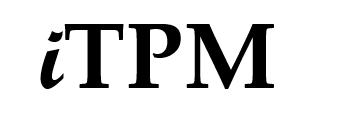A fundamental trade promotion management question revolves around how to plan and manage your rebates, manufacturer charge backs and other allowances:
Do you plan and manage everything by groups of similar items, or do you manage each item individually?
How you answer that question tells a lot about your role in trade promotion management, and your company’s products.
So before we get started, some definitions:
- An item is a unique case code or selling unit. This case code could have one UPC associated with it, or it could be a mixed shipper with multiple UPCs. The item is what you sell to your customers. Example: 12 ounce Orange Widget, Case Code 12345.
- An item group is a collection of items that all have similar attributes. For MCBs and rebates, these are typically items all sold at retail at the same price, advertised at the same time and with the same allowances. Example: 12 oz Widgets (ALL flavors), case codes, 12345, 12346, 12347, 12348, and 12349
Let’s ask the question, “Should you plan allowances by item?”
Sales Team: No, we plan by item group!
We don’t promote individual items, we promote by group. It will take too much effort to plan every item. We manage our promotions by item group.
Finance Team: Yes, plan by item AND we need to see allowances by item group.
We have items on sales orders, so we need to know every time an item has an allowance. However, we also need to know how the rebate & MCB was offered. For example, if we offered a promotion on all 12 oz items regardless of flavor, new flavors need to be added to the item group to prevent missed-off-invoice and missed event accruals for these new items. We also need to calculate profitability by item, because our cost-of-goods-sold varies by flavor.
Operations: Yes, plan by item, and sometimes by item group.
We don’t manufacture item groups, we manufacture items. We need to estimate future demand by item. However, we know the same team doesn’t always know what demand will be by item. If we know a promotion is created for an item group, we can use our demand planning algorithms and historical data to estimate demand by item within each item group.
How do we support TPM stakeholders that are on opposite sides of this question?
The answer is just do both! Many TPM solution providers have addressed this issue by allowing users to plan MCBs and rebates both ways: Allow the promotion planner the ability to enter the promotion at an item group level, and use the computer to allocate or ‘expand’ the item groups to each individual item. This approach provides every stakeholder the amount of detail they need to manage promotions. In a future blog we will explore some of the challenges of this allocation methodology for TPM solution providers and end-users.
Alex Ring
President
CG Squared
